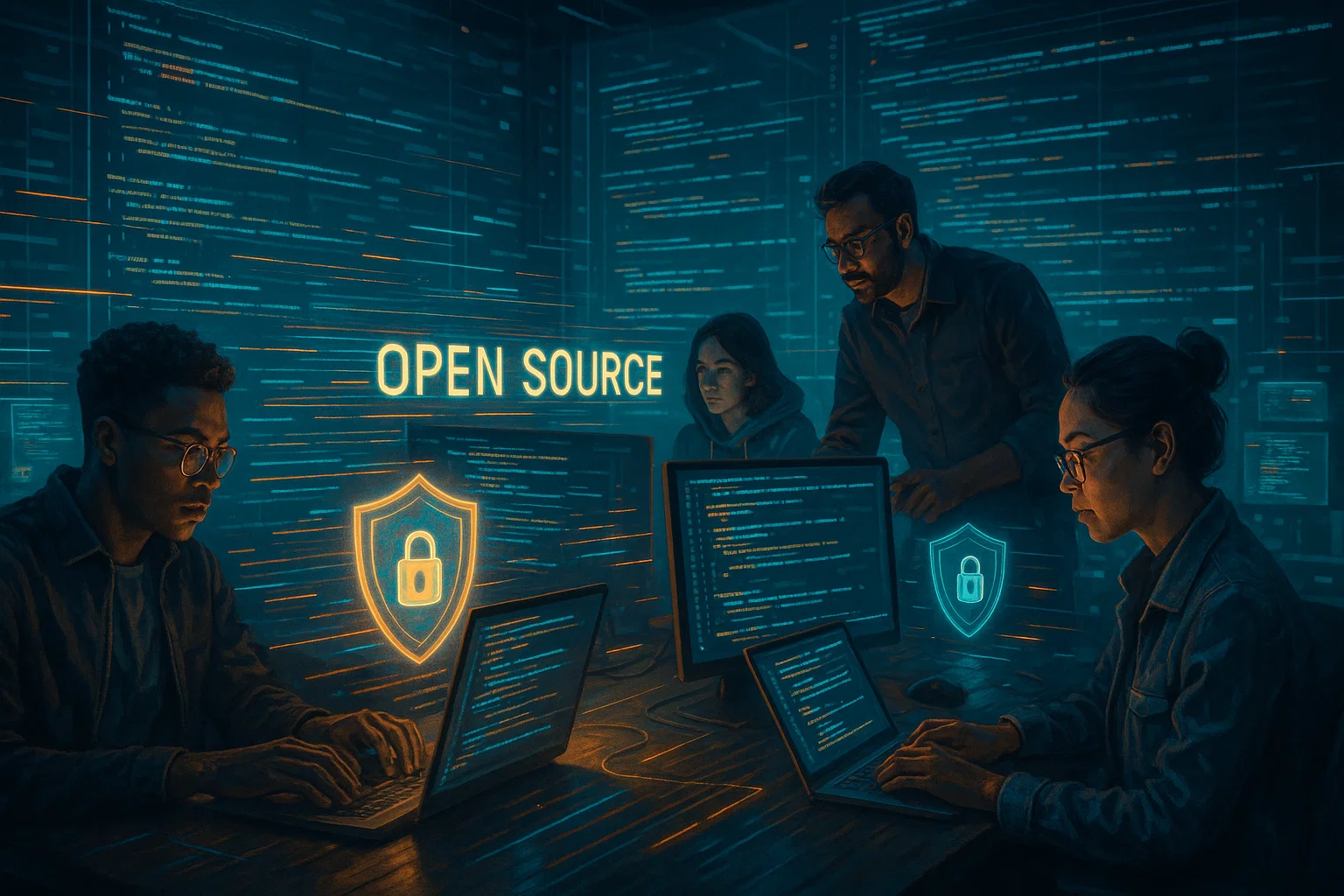Integrating Advanced Security Solutions into Open-Source Projects
Open-source development enables innovation through global collaboration, fast iteration, and community problem-solving support. Open, transparent development generates trust in the process and allows for even faster progress made possible by more eyes on the code, but it also comes with the risk that your project can be vulnerable to certain types of exploitation.

The addition of advanced security solutions into open-source ecosystems is a proactive approach towards the safety of contributors and end users. It will not only safeguard the product against emerging cyber threats but also provide integrity protection to the project, build up user confidence, and create new channels for wider adoption.
Malvertising Attack Risks in Open-Source Environments
Open-source thrives on transparency and sharing, meaning threats get much more surface area to attack docs sites, mirrors, package registries, and CI dashboards. Advertising supply chains are massively abused by injecting malware via compromised ad networks and tracking users into drive-by-downloads. A malvertising attack may very easily be directed at contributors browsing project sites or even end users looking for releases. This is where Moonlock comes in, a Mac-centered cybersecurity blog with an antimalware resource explaining how deceptive creatives, redirections, plus landing pages can exploit trust, turning regular browsing into an infection path for macOS systems.
Project integrity and community trust are better preserved with early identification and mitigation. Teams should monitor site ad placements, audit third-party scripts, and content security policies. Enforce package signing, checksum validation, and isolated build infrastructure. Clear incident response guidelines comfort the user and accelerate recovery when a threat is detected.
Core Strategies for Integrating Security Solutions
Great security for open-source projects begins in the code. Just as one would never skimp on basic functionality, security is not an afterthought feature. By taking advantage of integrating protection steps into each stage of workflow development, you catch vulnerabilities and make the application secure when adopted by others.
Security-First Development Practices
Write and impose coding standards of best practices that are language-specific regarding input validation, error handling, memory management, and authentication logic. Place these standards in the contribution guide for the project so all contributors are aware of what level of security is expected from them.
Also, automated scanners should be made to check for known CVEs (Common Vulnerabilities and Exposures), both in code and dependencies. The scans should be scheduled as part of pull request checks to ensure issues are discovered prior to merging.
Lastly, check and prove the validity of all third-party libraries. Use checksum checks, digital signatures, and known good package sources. Keep an up-to-date list of needs and change old or left packages right away.
Leveraging Advanced Security Tools for Open-Source Projects
Work on dynamic and static analysis. Dynamic analysis is the testing of an application at run time to find out if there are issues in the execution paths. Static analysis includes a review of code without execution to identify potentially insecure functions or patterns. Both, when used together, ensure coverage.
Consider implementing machine learning-based and rule-driven monitoring systems capable of detecting suspicious activities and anomalies within build pipelines, repositories, or runtime environments.
Moreover, security checks should be put right into open-source security integration. Make builds stop automatically if they do not pass security tests, and get sign-off from maintainers when high-risk issues are found.
Role of Community in Security Implementation
Open-source security is best when it leverages the combined intellect of its contributors. Security tools aren’t merely strategies you implement; they’re the people contributing.
A vigilant community can spot, report, and work around threats long before any isolated teams inside a vacuum ever could, turning collaboration into a defensive advantage. For this to work, clear channels of communication and documented processes should be turned into mutual trust.
Encouraging responsible disclosure
Make a clear vulnerability disclosure policy that shows how to report security problems, when a response can be expected, and steps taken to keep the reporter safe. Give a specific way to contact you, like a security email or issue form, so community members can safely share what they find.
Peer review and code audits
Code changes should undergo peer review by at least one reviewer with an eye on the security implications of the changes being made. Periodic code audits may be scheduled for critical components to discover vulnerabilities that were not addressed and to check compliance against secure coding standards.
Shared threat intelligence
Post and read real-time threat data on trusted security forums and mailing lists. Talking to other projects and security researchers increases the view of attack patterns, new exploits, and ways to stop them, so the community can respond before it becomes a problem.
Final Thoughts
Advanced security solutions implementation in an open-source project is not a one-time effort but rather a continuous one. The more secure the codebase, the safer its users are. Secure development practices amalgamate advanced tools with community vigilance to keep projects resilient as threats evolve.
In this regard, as attacks on systems continue increasing in complexity, having security as a primary consideration enables open-source creativity to advance unabated, with neither trust nor integrity being put at risk.